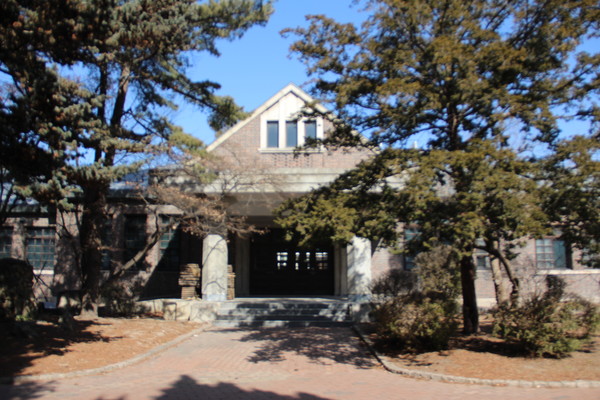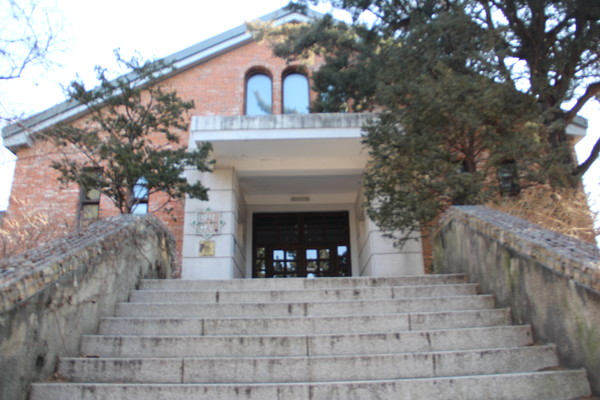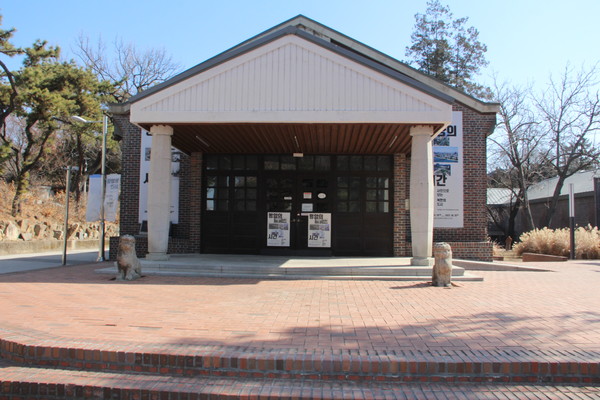What are the most representative landmarks of University of Seoul (UOS)? Everyone thinks differently about this. For some, it may be the Front Door or the tallest building with the school’s name on it. For others, it may be the clock tower or the Main Library.
However, the oldest building should primarily be a representative building because it reflects the university’s history. As people enter through the Front Door and walk on the right side of the street, they can see three buildings called Seonbyeokwon, which consists of the Kyongnong Hall, University Museum, and Birch Hall. Among them, the Kyongnong Hall would suffice as a representative landmark of the school since it is one of the oldest buildings in UOS.
UOS was established in 1918 at Cheongnyang-ri, Kyung Sung Public Agricultural College. It then moved to Jeonnong-dong, Dongdaemun-gu, where the campus is currently located. The Kyongnong Hall was built in 1937 after the relocation. In the Kyung Sung Public Agricultural College, the Kyongnong Hall was used as the main university building. The University Museum was used as a classroom, and the Birch Hall was used as the main auditorium. Most of the buildings were destroyed over time, and only these three remained.
The Kyongnong Hall is a one-storied, low-rise building, with red bricks. It exhibits the typical architectural styles of the Japanese colonial era, such as walls made of fire-baked bricks and wooden truss roofs. Even before the remodeling, the building had well preserved its original appearance. Due to its great historical significance and high preservation value, the Seoul Metropolitan Government designated the Kyongnong Hall and Birch Hall as Seoul Future Heritage, implying that these were worth preserving for future generations.
In 2012, the university conducted a remodeling because UOS judged Kyongnong Hall, University Museum, and Birch Hall became aged. To examine the remodeling of the Kyongnong Hall, The UOS Times interviewed Professor Lee Chung-kee from the Department of Architecture, who was in charge of the remodeling.

Q. Kyongnong Hall, University Museum, and Birch Hall area are called Seonbyeokwon. What does that mean?
A. When people work on something, it is customary for the creator to name the work. Since architectural remodeling is also a kind of art, I named the Kyongnong Hall area Seonbyeokwon after remodeling the three buildings. “Seon” means “good,” “byeok” means “brick,” and “won” means “garden” as per Chinese characters. I wanted to express my gratitude to these three brick buildings for standing strong for a long time.
Q. What do you think is the value of the Kyongnong Hall, and why should it be preserved?
A. It is uncommon for a hundred-year-old university to have old buildings that were used for educational rather than administrative purposes. The Kyongnong Hall itself proves the hundred-year-old tradition and history of UOS, which represents the history of Seoul.
Q. What was the condition of the Kyongnong Hall before the remodeling, and what did you want to convey through it?
A. The roof had fallen in, so iron columns were erected to support it. The repair was frequently conducted to block the windows and cement them to form a wall. Except for the outer wall, the building did not reveal its original appearance. Therefore, I wanted to carry out remodeling to show the original form of the building. I peeled the paint off the inner wall, insulated the wall, and erected the brick wall inside. Therefore, the outer wall remained intact at the time of its construction, and the ambiance within this remained the same.
Q. What do you want to say to UOS students who use the Kyongnong Hall?
A. Every university fosters students with academic traditions. A hundred-year-old school has its own academic culture and history and educates students who pursue the same values that the school stands for. The building of the university also defines the students’ patterns of behavior, the school’s atmosphere, landscape, and conditions. Therefore, there is a need for various buildings that encompass the past and future to coexist. I remodeled the Kyongnong Hall to remind people of the past of UOS. Thus, I wanted many students from various departments to use this hall for multiple activities. It would be nice if UOS could assign various activities in as many departments as possible.
The professor also added that he considers the Kyongnong Hall to be the landmark of UOS. “Usually, people think of the vertically long building as a landmark. On the other hand, the Kyongnong Hall area could be a horizontally long landmark. I hope the students will remember the hundred-year history of UOS and be proud of the school when they see Kyongnong Hall.” It is beautiful in all seasons. It would be great to visit the Kyongnong Hall, look around the building, and take pride in UOS.



